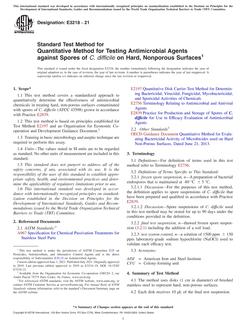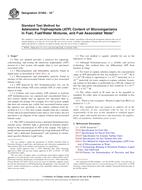1.1 This test method covers the minimum temperature required to ignite insulating materials using a glowing heat source. In a preliminary fashion, this test method differentiates between the susceptibilities of different materials with respect to their resistance to ignition due to an electrically-heated source.
1.2 This test method applies to molded or sheet materials available in thicknesses ranging from 0.25 to 6.4 mm.
1.3 This test method is not valid for determining the ignition behavior of complete electrotechnical equipment, since the design of the electrotechnical product influences the heat transfer between adjacent parts.
1.4 This test method measures and describes the response or materials, products, or assemblies to heat and flame under controlled conditions, but does not by itself incorporate all factors required for fire hazard or fire risk assessment of the materials, products, or assemblies under actual fire conditions.
1.5 The values stated in SI units are to be regarded as the standard. (See IEEE/ASTM SI-10 for further details.)
This standard does not purport to address all of the safety concerns, if any, associated with its use. It is the responsibility of the user of this standard to establish appropriate safety and health practices and determine the applicability of regulatory limitations prior to use. For specific precautionary statements, see Section 9.
1.6 Fire testing of products and materials is inherently hazardous, and adequate safeguards for personnel and property shall be employed in conducting these tests. Fire testing involves hazardous materials, operations, and equipment.
Note 1 – Although this test method and IEC 60695-2-13 differ in approach and in detail, data obtained using either are technically equivalent.
Product Details
- Published:
- 10/01/2003
- Number of Pages:
- 4
- File Size:
- 1 file , 53 KB


